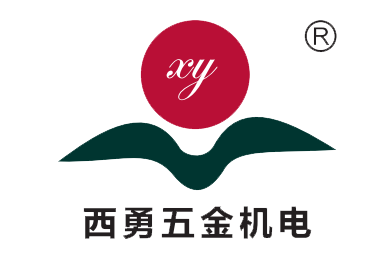introduction
In industrial production, cylinders, as a common actuator, are widely used in various automation equipment and mechanical systems. Its normal operation is directly related to the efficiency and quality of production. Once the cylinder malfunctions, it may cause equipment shutdown, production stoppage, and unnecessary economic losses. Therefore, mastering the rapid diagnosis and maintenance skills of industrial cylinders is crucial. This article will provide a detailed introduction to the common types of faults, diagnostic methods, and corresponding maintenance techniques for industrial cylinders.

1、 Common types of faults in industrial cylinders
(1) Poor movement
1. The cylinder moves slowly or weakly, unable to achieve the expected stroke and speed. This may be caused by insufficient air pressure, excessive friction inside the cylinder, or heavy load.
2. The cylinder action is unstable, with crawling or shaking phenomena. This situation is usually caused by impurities entering the cylinder, poor lubrication, or failure of the buffering device.
3. The cylinder does not move, which may be caused by electromagnetic valve failure, air path blockage, piston jamming, and other reasons.
(2) Leakage issue
1. Leakage at both ends of the cylinder head may be caused by wear, damage, or improper installation of the end cap seals.
2. Leakage at the piston is usually caused by wear, aging, or damage to the piston sealing ring, leading to compressed air leakage between the piston and cylinder.
3. Leakage at the cylinder interface is often caused by seal failure, loose threads, or damaged interfaces at the connection points.
(3) Abnormal noise
When the piston moves inside the cylinder, it makes a collision sound, which may be caused by the failure of the buffer device, the piston speed being too fast, or foreign objects inside the cylinder.
2. Abnormal noise emitted during the operation of the solenoid valve may be caused by wear of internal components, impurities in the air circuit, or malfunction of the solenoid valve coil.
(4) Outer cylinder deformation
1. The deformation of the cylinder outer cylinder may be caused by excessive external impact, improper installation, or prolonged operation in high temperature and high pressure environments. The deformation of the outer cylinder can affect the normal operation of the cylinder and may even cause the piston to get stuck.
2、 Quick diagnostic method
(1) Appearance inspection
1. Carefully inspect the appearance of the cylinder to see if there are any obvious signs of damage, deformation, leakage, etc. Check whether the installation of the cylinder is firm and whether the connection parts are loose.
2. Observe the movement of the cylinder to see if it can expand and contract normally, if the movement is smooth, and if there are any abnormal noises or vibrations.
(2) Air pressure detection
1. Use a pressure gauge to measure the intake pressure of the cylinder, ensuring that the pressure is within the specified range. If the air pressure is insufficient, check the components such as the gas source, gas pipeline, and pressure regulating valve for blockages, leaks, or improper pressure regulation.
2. Observe the changes in air pressure during the operation of the cylinder. If the air pressure fluctuates greatly, it may be due to throttling in the air circuit or leakage inside the cylinder.
(3) Electromagnetic valve testing
1. Check if the coil of the solenoid valve is energized. Use a multimeter to measure the resistance of the coil and determine if it is damaged.
2. Manually operate the solenoid valve and observe whether the valve core moves flexibly and whether there is any jamming phenomenon. If the solenoid valve is not functioning properly, you can try cleaning the inside of the solenoid valve or replacing the valve core.
(4) Leak detection
When the cylinder stops working, apply soapy water to the sealing parts, interfaces, and other areas of the cylinder that may leak, and observe whether bubbles are generated. If there are bubbles, it indicates a leak and further inspection and repair are needed.
For small leaks, gas leak detectors can be used to improve the accuracy of detection.
(5) Buffer effect check
1. Observe the buffering effect of the cylinder at the end of the stroke, and see if the piston can stop smoothly and if there is any impact sound. If the buffering effect is poor, check if the buffering device is working properly, adjust the opening of the buffering valve or replace the buffering device.
3、 Maintenance skills
(1) Repair of poor movement
If the slow or weak movement is caused by insufficient air pressure, check the air supply system to ensure that the air pressure is stable within the specified range. Clean the gas pipeline, remove blockages, and check if the pressure regulating valve is working properly.
2. For the problem of excessive friction inside the cylinder, check the wear of the piston and cylinder barrel. If the wear is slight, an appropriate amount of lubricating oil can be added for lubrication; If the wear is severe, it is necessary to replace the piston or cylinder.
If the load is too heavy and causes poor cylinder operation, it is necessary to re evaluate the load situation, adjust the load or replace the appropriate cylinder.
(2) Repair of leakage issues
For leaks at the end cap, replace worn or damaged seals and ensure that the end cap is installed correctly and the bolt tightening torque meets the requirements.
When there is a leakage at the piston, replace the piston sealing ring. When replacing the sealing ring, pay attention to cleaning the inside of the piston and cylinder to avoid impurities entering and affecting the sealing effect.
3. If there is a leak at the cylinder interface, check the sealing components and threads at the connection point, and replace them promptly if they are damaged. Re tighten the threaded connection to ensure reliable sealing.
(3) Repair of abnormal noise
When the piston makes an impact sound, check if the buffer device is working properly. If the buffer device fails, adjust the opening of the buffer valve or replace the buffer device. At the same time, check if the piston speed is too fast, which can be controlled by adjusting the throttle valve.
2. For abnormal noise from the solenoid valve, clean the inside of the solenoid valve to remove impurities and dirt. Check whether the internal parts of the solenoid valve are worn, and replace them promptly if damaged. Check if the solenoid valve coil is normal, and replace the coil if there is a fault.
(4) Repair of outer cylinder deformation
If the deformation of the outer cylinder is not severe, you can try using a correction tool for calibration. During the calibration process, attention should be paid to avoiding excessive calibration that may cause damage to the outer cylinder.
2. For severely deformed cylinder shells, new cylinders should be replaced. When installing a new cylinder, pay attention to the correct installation method to avoid the outer cylinder from deforming again due to improper installation.
4、 Preventive measures
(1) Regular maintenance and upkeep
1. Regularly clean the cylinder, remove dust, oil stains, and impurities from the cylinder surface, and keep the cylinder clean.
2. Add lubricating oil according to the prescribed cycle to ensure good lubrication inside the cylinder and reduce friction and wear.
3. Check the wear of seals, connectors, and other components of the cylinder, and replace worn or damaged parts in a timely manner.
(2) Proper installation and use
When installing the cylinder, ensure that the installation position is correct, the installation is firm, and avoid damage to the cylinder due to uneven force caused by improper installation.
2. When using a cylinder, pay attention to controlling the air pressure and load to avoid operating the cylinder beyond its rated working range.
3. Avoid excessive external impact and vibration on the cylinder to prevent deformation of the outer cylinder and damage to internal components.
conclusion
The troubleshooting of industrial cylinders requires the comprehensive use of rapid diagnostic methods and effective maintenance techniques. By understanding and mastering the common types of cylinder faults, as well as correct diagnosis and maintenance methods, cylinder faults can be resolved in a timely manner to ensure the normal operation of the equipment. At the same time, doing a good job in preventive maintenance of cylinders can extend their service life, improve production efficiency, and reduce maintenance costs. In practical work, it is necessary to continuously accumulate experience, improve the ability to diagnose and repair cylinder faults, and ensure the smooth progress of industrial production.
Prev:Aluminum side push cylinder: a key component for improving production efficiency
Next:No more







